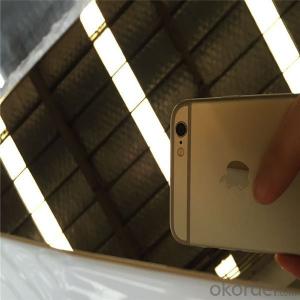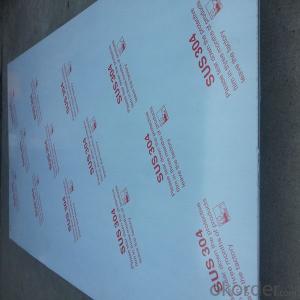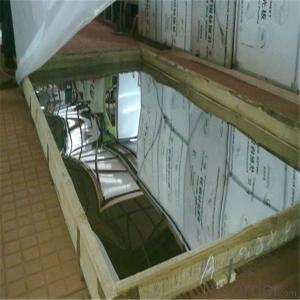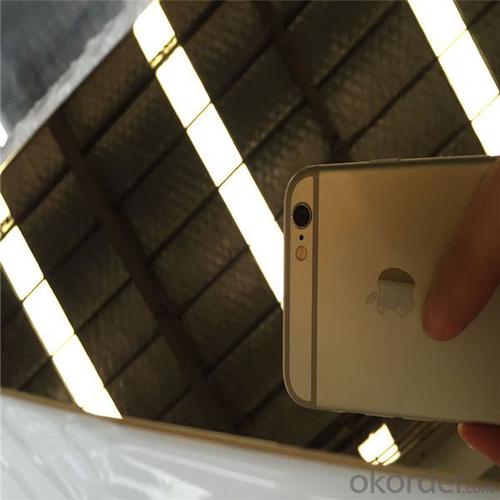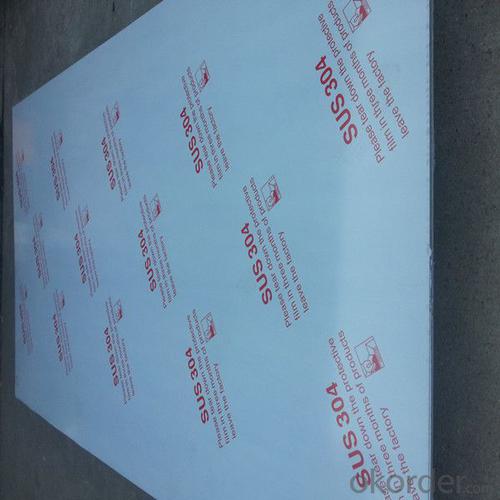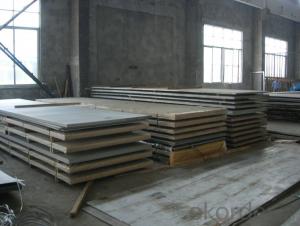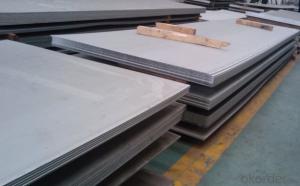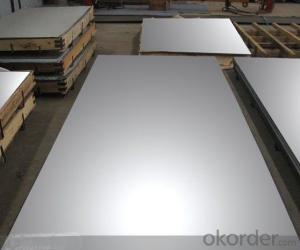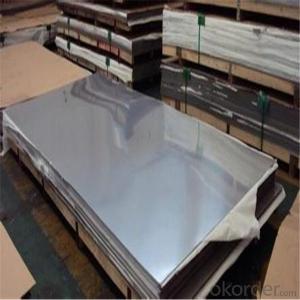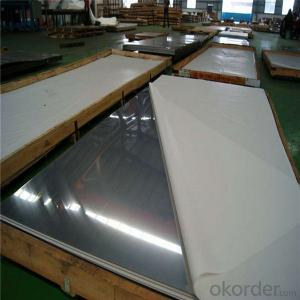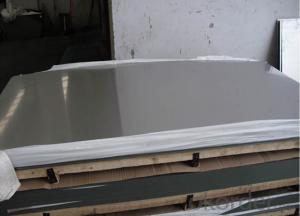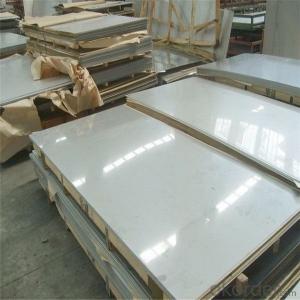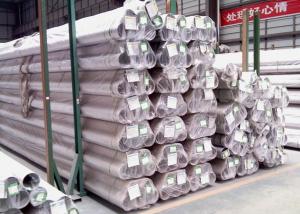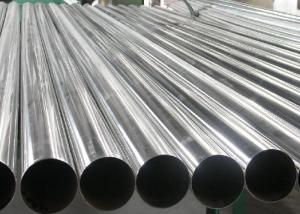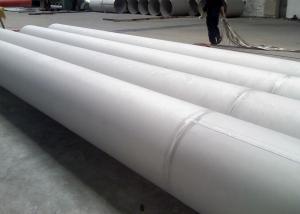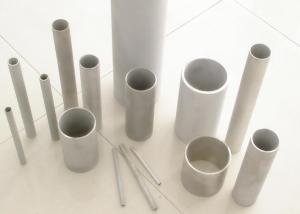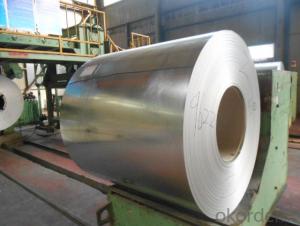904l Stainless Steel Sheet Middle East
- Loading Port:
- Shanghai
- Payment Terms:
- TT OR LC
- Min Order Qty:
- 1 m.t.
- Supply Capability:
- 20000 m.t./month
OKorder Service Pledge
OKorder Financial Service
You Might Also Like
Specification
904l Stainless Steel Sheet Middle East
Grade: | 201,304,304L,316,316L,309,309S,310S,904L | Standard: | JIS\AISI\ASTM\GB\DIN\EN\ Other |
Length: | As your request | Thickness: | 0.25mm-3.0mm |
Width: | 15-1500mm | Place of Origin: | Jiangsu, China (Mainland) |
Brand Name: | TISCO | Type: | Coil/sheet |
Application: | Construction\decoration\industry | Certification: | ISO |
Technique: | Cold rolled | Surface: | BA\2B\No.1\No.4\No.8\HL\8K\Brush |
Stock: | Ready in stocks | Package: | According to the requirements |
Edge: | Slit edge & mill edge | Content of Nickel: | 201:1%-1.2%; 304:8% |
Vickers hardness: | HV210 | Thickness tolerance: | ±0.01mm |
Sample: | Available | Material: | Refined raw material |
904l Stainless Steel Sheet Middle East
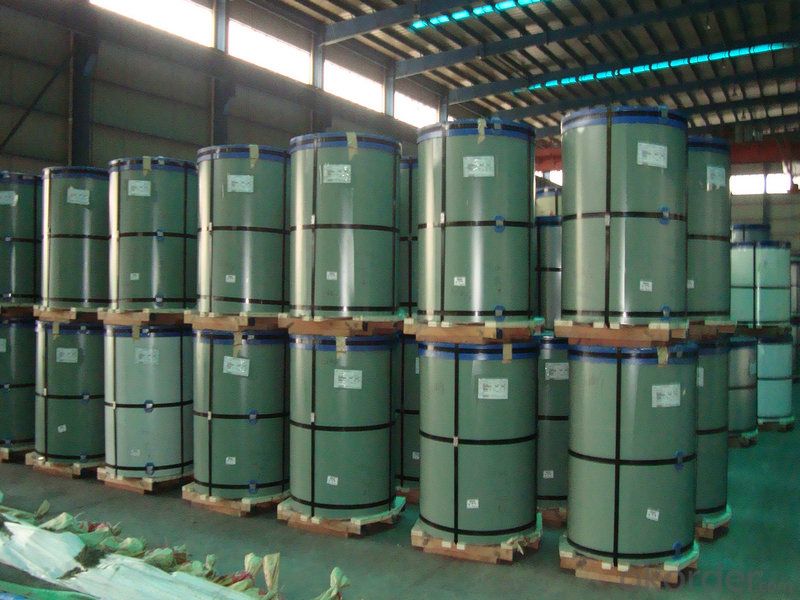
4.Hot rolled stainless steel plate
Thickness : 3.0mm-120mm
Width : 1219mm/1500mm/1800mm/2000mm
Length : 2000mm/2438mm/4000mm/6000mm or cutting randomly
Model size : 3.0mm-120mm(TK)*1219mm(W)*2438mm(L)
3.0mm-120mm(TK )*1500mm(W)*6000mm(L)
3.0mm-120mm(TK) *1800mm(W)*6000mm(L)
3.0mm-120mm(TK) *2000mm(W)*6000mm(L)
Surface : No.1
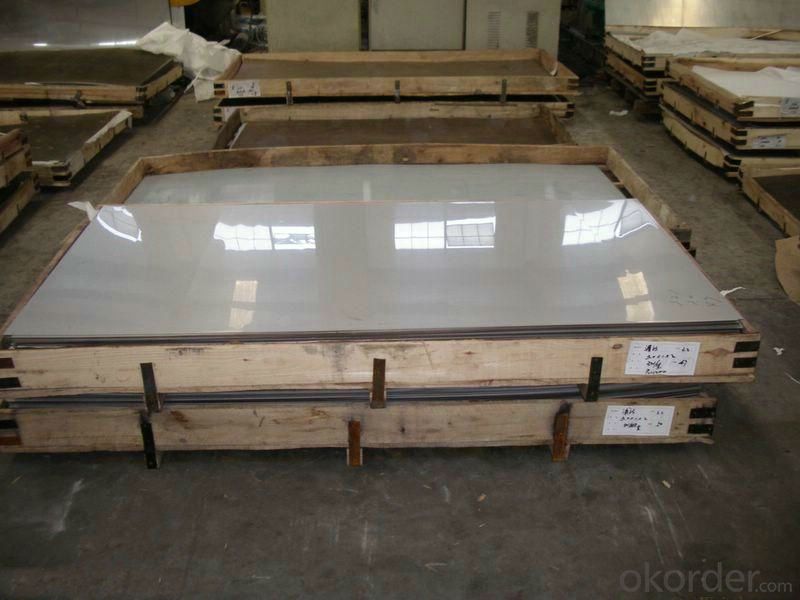
5.Characteristics and application 904l Stainless Steel Sheet Middle East
Surface Finish | Definition | Application |
NO.1 | The surface finished by heat treatment and pickling or processes corresponding there to after hot rolling. | Chemical industry equipment,Industrial tanks… |
2B | Those finished, after cold rolling, by heat treatment, pickling or other equivalent treatment and lastly by cold rolling to given appropriate luster. | Medical equipment, Food industry, Construction material, Kitchen utensils… |
BA | Those processed with bright heat treatment after cold rolling. | Kitchen utensils, Electric equipment, Building construction… |
NO.4 | Those finished by polishing with No.150 to No.180 abrasives specified in JIS R6001. | Kitchen utensils, Building construction, Medical equipment… |
HL | Those finished polishing so as to give continuous polishing streaks by using abrasive of suitable grain size. | Building Construction… |
8K | A mirror-like reflective surface by polishing with finer abrasives over 800 mesh | Reflector, Mirror, Interior-Exterior decoration |
5.Payment : Usually 30% of the amount by T/T as deposit , and the balance money shall be paid by T/T after got the faxed B/L.Or L/C at sight .
6. Package: Kraft paper+Hard board+metal/wooden pallet+metal strip; or based on the customer requirement.
7. USE: construction.machinebuilding,container manufacturing,shipbuilding,bridges and so on.
The operating philosophy of our company : high quality and best service and competitive price and prompt delivery .We sincerely welcome the old and new customers to inquiry the price . any questions and needs you have , pls don't hesitate to contact us anytime .
- Q: How do you remove adhesive from stainless steel sheets?
- One effective way to remove adhesive from stainless steel sheets is by applying a small amount of rubbing alcohol or acetone to a soft cloth and gently rubbing the adhesive residue. Another option is to use a mixture of warm water and mild soap, followed by scrubbing with a non-abrasive sponge or cloth. If the adhesive is particularly stubborn, using a commercial adhesive remover specifically designed for stainless steel can also be effective.
- Q: How do you prevent warping or distortion in stainless steel sheets?
- To prevent warping or distortion in stainless steel sheets, several measures can be taken. First, it is important to properly handle and store the sheets to prevent any bending or twisting during transportation or storage. Secondly, ensuring a smooth and even distribution of heat during welding or fabrication processes can help minimize the chances of warping. Additionally, using proper clamping techniques and supports during machining or cutting operations can help maintain the shape and integrity of the stainless steel sheets. Lastly, adhering to the recommended thicknesses and specifications provided by the manufacturer for specific applications can also help prevent warping or distortion in stainless steel sheets.
- Q: Are stainless steel sheets fire-resistant?
- Yes, stainless steel sheets are fire-resistant. Stainless steel is a heat-resistant material that can withstand high temperatures without losing its structural integrity. This makes it an ideal choice for applications that require fire resistance, such as in the construction industry, where stainless steel sheets are commonly used for fireproofing walls, roofs, and enclosures. Additionally, stainless steel has a high melting point, which means it can withstand extreme heat without deformation or melting, further enhancing its fire-resistant properties.
- Q: Can stainless steel sheets be used for insulation?
- Typically, stainless steel sheets do not serve as insulation materials. Despite being widely used for their durability and resistance to corrosion and heat, stainless steel lacks good insulation properties. The purpose of insulation materials is to minimize heat transfer by reducing conduction, convection, and radiation. These materials usually possess low thermal conductivity, making them effective in preventing heat transfer. On the contrary, stainless steel has high thermal conductivity, allowing it to easily conduct heat. To achieve insulation, it is more common to utilize materials like fiberglass, mineral wool, foam boards, or reflective barriers. These materials have lower thermal conductivity and can effectively trap air or create a barrier that restricts heat transfer. In comparison, stainless steel sheets cannot provide the same level of insulation as these specialized materials. Nevertheless, stainless steel sheets still find utility in construction or industrial settings due to their strength, corrosion resistance, and aesthetic appeal.
- Q: Are stainless steel sheets good for cryogenic storage?
- Stainless steel sheets are widely utilized in cryogenic storage owing to their exceptional characteristics. Renowned for its remarkable strength, durability, and corrosion resistance, stainless steel proves to be ideal for extreme temperature settings such as cryogenic storage. Furthermore, stainless steel retains its mechanical properties even under extremely low temperatures, guaranteeing the safety and integrity of stored materials. Moreover, stainless steel sheets exhibit favorable thermal conductivity, enabling efficient heat transfer throughout cryogenic processes. As a result, stainless steel sheets emerge as a dependable option for cryogenic storage purposes.
- Q: How do you polish stainless steel sheets?
- To polish stainless steel sheets, you can start by cleaning the surface thoroughly to remove any dirt or grime. Then, use a stainless steel cleaner or a mixture of mild detergent and warm water to wipe the sheets in the direction of the grain. Next, rinse the sheets with clean water and dry them with a soft cloth. Finally, apply a stainless steel polish or a mixture of vinegar and olive oil to a clean cloth, and gently buff the sheets in circular motions to restore their shine and remove any remaining stains or smudges.
- Q: Are stainless steel sheets resistant to lactic acid?
- Yes, stainless steel sheets are generally resistant to lactic acid.
- Q: How do you prevent pitting or crevice corrosion on stainless steel sheets?
- To prevent pitting or crevice corrosion on stainless steel sheets, there are several measures that can be taken: 1. Proper alloy selection: Choosing the right grade of stainless steel is crucial. Grades with higher levels of chromium, molybdenum, and nickel provide better resistance to corrosion. 2. Surface finishing: Ensuring a smooth and clean surface is essential to prevent corrosion. Rough surfaces or scratches can act as initiation sites for corrosion. Polishing or electropolishing the stainless steel sheets can help create a smoother surface. 3. Regular cleaning and maintenance: Regular cleaning using mild detergents and non-abrasive cleaners is important to remove contaminants that may corrode the stainless steel sheets. It is also necessary to avoid using chlorine-based cleaners or abrasive materials that can damage the protective oxide layer. 4. Avoiding stagnant conditions: Pitting and crevice corrosion are often intensified in stagnant environments. Ensuring proper drainage and avoiding the accumulation of stagnant water or debris can help prevent this type of corrosion. 5. Control of environmental factors: Stainless steel sheets should be protected from exposure to aggressive chemicals, such as chloride-containing solutions or acidic substances. Proper ventilation and humidity control can also help reduce the risk of corrosion. 6. Use of protective coatings: Applying protective coatings, such as paints or passivation treatments, can provide an additional layer of protection against pitting and crevice corrosion. 7. Regular inspections: Conducting regular inspections to detect any signs of corrosion early on can help prevent further damage. Prompt remedial actions, such as repairing damaged coatings or addressing any drainage issues, can prevent the spread of corrosion. By following these preventive measures, the risk of pitting or crevice corrosion on stainless steel sheets can be significantly reduced, ensuring their longevity and maintaining their aesthetic appeal.
- Q: Can stainless steel sheets be used for electromagnetic compatibility?
- Yes, stainless steel sheets can be used for electromagnetic compatibility (EMC). Stainless steel has good electrical conductivity and is often used as a shielding material to prevent the interference of electromagnetic fields. It can effectively block electromagnetic radiation and provide a barrier against external electromagnetic waves. Additionally, stainless steel's durability and corrosion resistance make it suitable for long-term EMC applications.
- Q: What are the different types of mirror finishes available for stainless steel sheets?
- There are several different types of mirror finishes available for stainless steel sheets, each offering a unique appearance and level of reflectivity. 1. #8 Mirror Finish: This is the most reflective and commonly used mirror finish. It has a highly polished surface with a mirror-like appearance, providing excellent reflectivity and clarity. This finish is achieved by using progressively finer grit abrasive compounds during the polishing process. 2. #7 Mirror Finish: This finish is slightly less reflective than the #8 mirror finish but still offers a high level of reflectivity. It has a smooth, shiny surface with minimal distortion, making it suitable for applications where a high level of reflectivity is desired. 3. #6 Mirror Finish: This finish has a moderately reflective surface with a slightly duller appearance compared to the #7 and #8 mirror finishes. It provides good reflectivity while hiding minor surface imperfections. It is often used in architectural applications where a balance between reflectivity and durability is required. 4. Satin Mirror Finish: This finish has a satin-like appearance with a low level of reflectivity. It has a smooth surface with a brushed texture, providing a subtle and sophisticated look. It is commonly used in decorative applications such as interior design or furniture. 5. Antique Mirror Finish: This finish is achieved by applying special chemical treatments to the stainless steel surface, creating a vintage or aged appearance. It has a reflective surface with a distorted and tarnished look, adding a unique and artistic touch to various applications. Overall, the choice of mirror finish depends on the desired level of reflectivity, aesthetic preferences, and specific application requirements.
Send your message to us
904l Stainless Steel Sheet Middle East
- Loading Port:
- Shanghai
- Payment Terms:
- TT OR LC
- Min Order Qty:
- 1 m.t.
- Supply Capability:
- 20000 m.t./month
OKorder Service Pledge
OKorder Financial Service
Similar products
Hot products
Hot Searches
Related keywords
